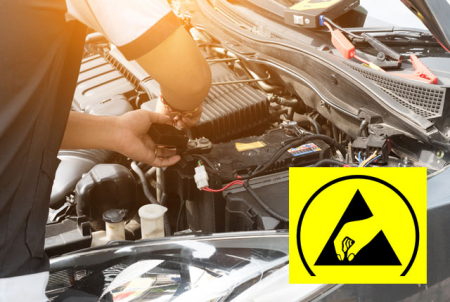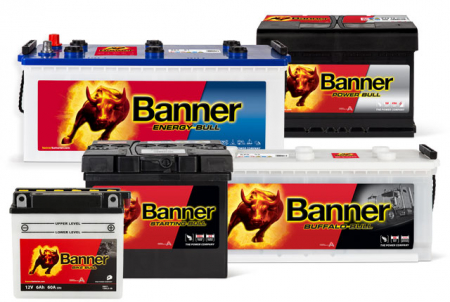WHAT DOES “ESD” MEAN?
ELECTROSTATIC DISCHARGE
The abbreviation “ESD” stands for Electrostatic Discharge.

When the battery is charged, oxyhydrogen, a mixture of hydrogen and oxygen, is produced in the battery. This mixture is explosive and can be ignited by a spark. An ignition spark can also occur due to electrostatic discharge.
Why does electrostatic discharge occur?
The battery housing is made of plastic and is an electrical insulator. Therefore, the interior of the battery may have a different potential than the environment. The electrostatic discharge is created by compensating for the potential difference between the inside and outside.
Electrostatic charging of persons or objects can occur due to friction of rechargeable surfaces (e.g. by cleaning the battery with a dry cloth or pulling the battery on a carpet) or due to friction of surfaces and objects in the direct vicinity of the battery. The surfaces or objects are then electrostatically charged. This can result in very high electrical voltages or potentials.
How is the spark created?
- Depending on the given circumstances (e.g. materials, friction, humidity), an ignition spark may compensate for the charge. The spark is formed via the air by charge balance between two surfaces of different electron concentration.
- The energy of this kind of spark is very low, but it can still be enough to cause the oxyhydrogen to explode.
What should look out for when transporting a battery in the glove compartment?
- If a charged person or object comes into close proximity to the battery, sparks may form.
Caution: Battery explosions are a serious hazard due to the risk of injury from escaping acid and from the plastic parts being blown off. If necessary, only wipe the battery with a damp anti-static cloth.

Sparking of batteries
Under certain conditions, ESD can affect the following Banner product variants:
- In the starter battery division:
Running Bull EFB, Power Bull, Power Bull PRO, Starting Bull, Buffalo Bull, Bike Bull, Energy Bull - In the industry battery division:
Traction Bull wet-cell, Traction Bull Bloc wet-cell,, Stand by Bull wet-cell
ESD only affects the following Banner product variants (including recombination batteries) in exceptional situations, e.g. when the battery is overcharged or the safety valve is opened:
- In the starter battery division:
Running Bull AGM, Bike Bull AGM, Bike Bull AGM PRO, Bike Bull GEL - In the industry battery division:
Traction Bull AGM, Traction Bull GEL, Traction Bull Bloc AGM, Traction Bull Bloc GEL, Stand by Bull AGM, Stand by Bull GEL
How can the risk of ESD be reduced?
Materials and technology used:
In terms of the battery, the risk of ESD can be reduced by taking the following measures:
- Use of thick material for the battery housing
- Spraying the battery with anti-static spray
- No need for battery plugs or battery plugs with high resistance in the sealing area
- Efficiently taping over the battery plugs due to full-surface top labelling
Due to the complexity of the topic, we would like to point you in the direction of the relevant specialist literature.
Banner uses the following attachment parts to improve product safety:
- ESD plugs
Some battery types of the Buffalo Bull EFB, Buffalo Bull High Current and Energy Bull product variants have what’s known as a ESD plug.
Electrostatic discharges are voltage discharges caused by large potential differences (these may even be visible as sparks) – they can cause a brief, high electrical current and can ignite flammable substances. The ESD plugs prevent precisely this. - Improved backfire protection
Lots of our battery types (e.g. Power Bull, Power Bull PRO, Buffalo Bull SHD, Buffalo Bull SHD PRO) have improved backfire protection.
You might also be interested in the following:

